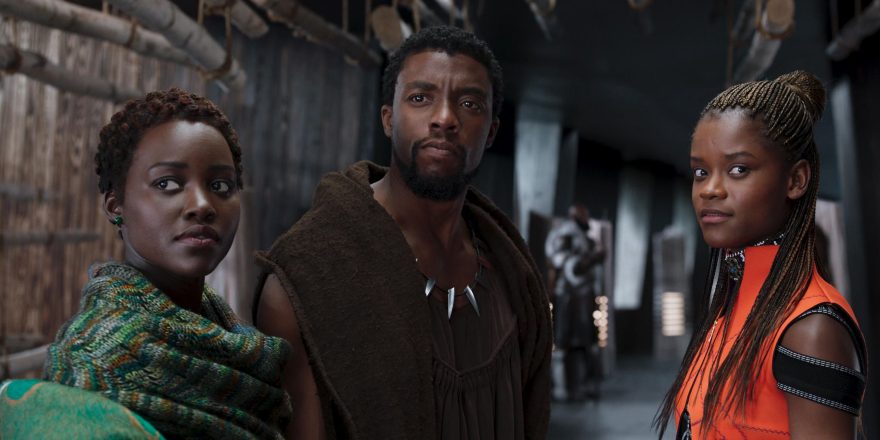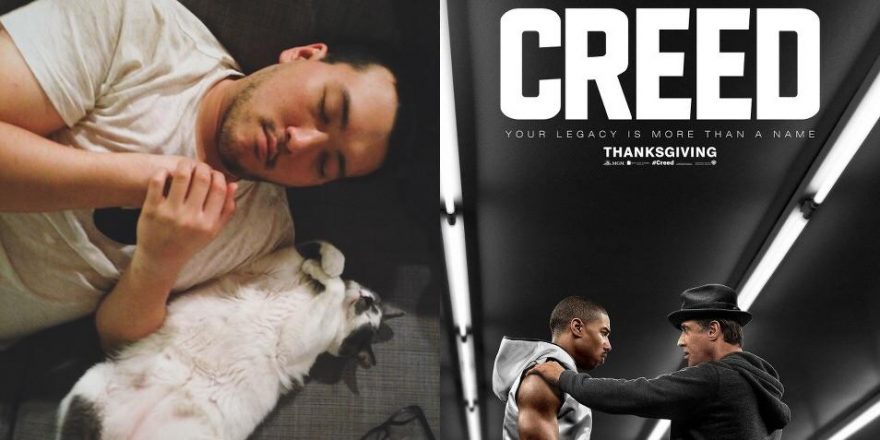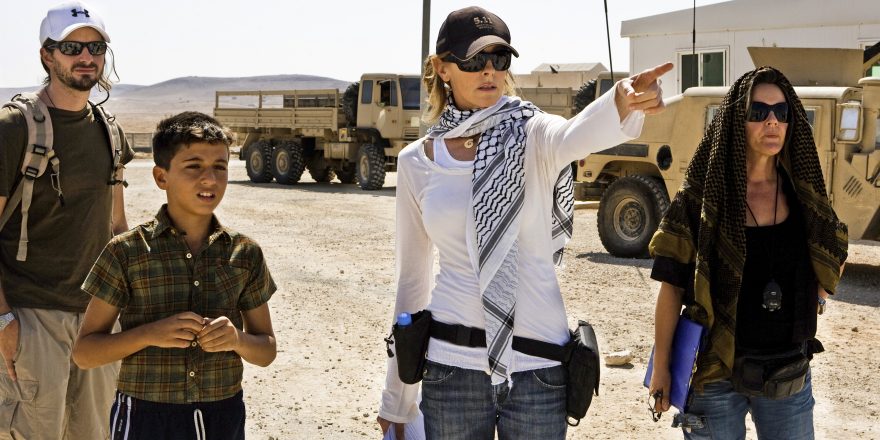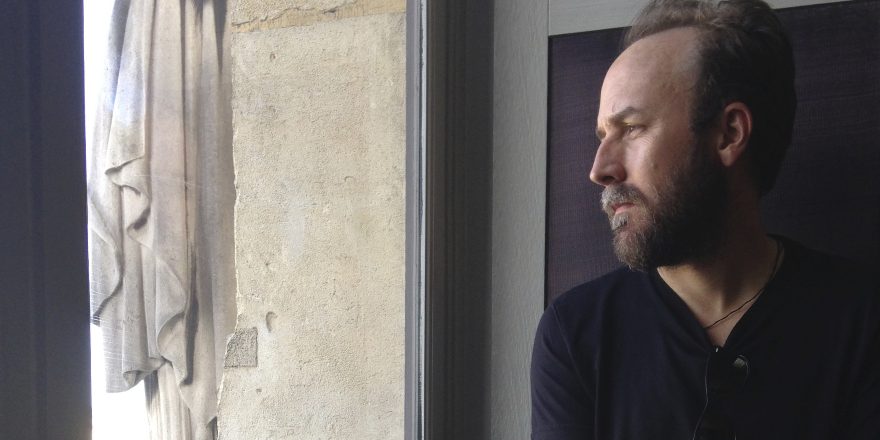My 13-year-old son had been waiting since summer for Black Panther to come out. We bought tickets weeks in advance.
“That was momentous!” I shouted with excitement to him as he jumped up to tap another street sign. An old lady stumbled behind him. “Watch out for other people,” his father scolded. It was difficult to go deeper than “momentous” with my son as we walked home. He had to tap every sign along the way. But I was desperate to tell him how important Black Panther was. “This is huge,” I tried again. He responded by telling me he hated when people make a big deal of things like this. A black superhero shouldn’t be “momentous.” It should have been that way the whole time. “That’s the way it’s supposed to be, Mom.”
For my son, it was just another exciting day with another exciting superhero, in a theater that served vanilla milkshakes. For my generation, this was the very first time we were seeing a black superhero on a movie screen. The only movement from here is forward, I thought. White, brown and black people paid to see the power of a black director, black writers, black actors, black collaborators. Children all over the country now have the proof that black and brown people have superpowers too.
I was moved by the energy of the audience. We were surrounded by mostly black and brown faces. Our laughter was all the same. Together we watched as Letitia Wright’s Shuri, confronted with an unconscious white man, said, “Great. Another broken white boy for us to fix.” The audience laughed. When he wakes and asks if he’s in Wakanda, she responds, “No, it’s Kansas.” More laughter. Letitia Wright got another big laugh when she called the white man a colonizer. The shared familiarity of the white world was evident. And we could all laugh at it together.
It was interesting to think this experience was such a big deal for me but for my son it was “the way things are supposed to be.” It didn’t phase him that he was maybe the only white boy in this audience. He doesn’t see a separation between races. To him, there is no black, brown or white. He knows a new world, not my old one. And, on this day, he knows that Black Panther is his favorite movie. That Black Panther has a lit suit. That Black Panther has super powers, and that Black Panther is meant to be.
Society, unknowingly, sets up their own mile markers to achieve equality. Can a Marvel movie be a mile marker for equality? Can it and the times change Hollywood? Change our society? Children imagine what they’ll be when they grow up by seeing the possibilities. The movies are a great venue for this type of reflection. Children need to see themselves in other people. They have to see themselves as a president, a lawyer, a fireman or a firewoman, a superhero, or the star of a Hollywood movie. We search for ourselves in the characters we see on screen. Sometimes we don’t find anything to relate to. Sometimes it’s the skin that’s different, or the gender, or the home, or the principles. Growing up, I had to identify with male characters ’cause the female characters sucked. I wanted to be like Paul Newman in Cool Hand Luke. Who could black people identify with? Who was representing their reality or giving them people they could aspire to emulate? Even now, Hollywood doesn’t come close to representing everyone’s reality.
When we go to the movies, we get to know a character. We see how they laugh, how they cry. We watch them shave their face. We observe them undress. We know if they wear boxers or thongs. We get to know a character on screen. We walk in their shoes for a couple hours, we cheer them on, we are saddened by their mistakes, we grow to love them. As if by magic, when we embrace a character, the color of their skin can disappear. Each moment that we identify with someone else, we put down our guard and are changed. We briefly visit another person’s world and our minds are widened; our hearts grow plumper. We become smarter. We open ourselves to ideas or ways of life that are different than our own.
I know there will be a time when people won’t have to say “black” or “white.” But as long as I’ve been alive, white and black people have been as separate as a book and its cover, a cup and its lid, a frame and its picture, printed words on a white page, lines on a highway. Growing up, we were always on the same ground but we seldom blended together. Is the white world ready to learn about the black world?
Black people know a lot about white people. They grew up with white folks on the TV sets in their living rooms. They saw white people in commercials selling toothpaste and Mr. Clean. They watched sitcoms and learned what white people thought was funny. They watched dramas that told of the fears and hopes of white people. They saw mostly white faces kissing other white faces on big white screens. Through entertainment, everyone could learn about the white world. But what do white people know of black people? The only black people that came into white living rooms when I was growing up were the Jeffersons and the cast of Good Times. I got to know Sanford and Son because my Papa identified with Sanford. Redd Foxx and Demond Wilson would be the only black men to enter Papa’s house. When I visited my grandparents and wanted to challenge their racist tendencies, I’d tell them I had a new boyfriend and he was black. (I never had any boyfriends.) My grandmother would shriek my name as her blood pressure shot up. But, you know, my Papa would just continue eating his mint chocolate chip ice cream. I think he didn’t react because of Redd Foxx. He got to know Sanford. Because he could identify with that old man, he wasn’t as alarmed by the idea that my boyfriend might not be white. What was the big deal? He had an old black man in his house every week.
Black Panther brought purple to the cinematic palette. It brought beating drums, and the wrath of an African warrior. It brought a world without second chances. It brought a good guy backed into bad choices. It brought jokes about white people. It brought an intimacy between whites and blacks. It introduced us to new faces, and lit up legendary ones. What a pleasure to get reacquainted with the beauty of Angela Bassett and the craft of Lupita Nyong’o, to get to know the fierceness of Danai Gurira, the charm of Letitia Wright. And then to watch those ladies throw down!
For my son, assimilation has been happening since his birth. He’s learning more about black culture than I ever did growing up. He gets a familiarity through Instagram posts of his favorite sports players. He steps into the home life of comic YouTube sensations who introduce us to their toothbrushes. He does all this with his friends who are black and brown and white. There is still a separation of black and white, but there is a mixing too that social media, movies and TV have begun to embrace. I’ll keep hearing my son say, “That’s the way things are supposed to be,” because the world is changing. As more black and brown filmmakers like Ryan Coogler make more big movies, and as writers like Ta-Nahisi Coates bring wisdom to the masses, we’ll be seeing more of what’s “supposed to be” in Hollywood and beyond. Time for the white world to get to know the new world – the world of supposed to be’s, have to be’s and gonna be’s. Black Panther was momentous.







